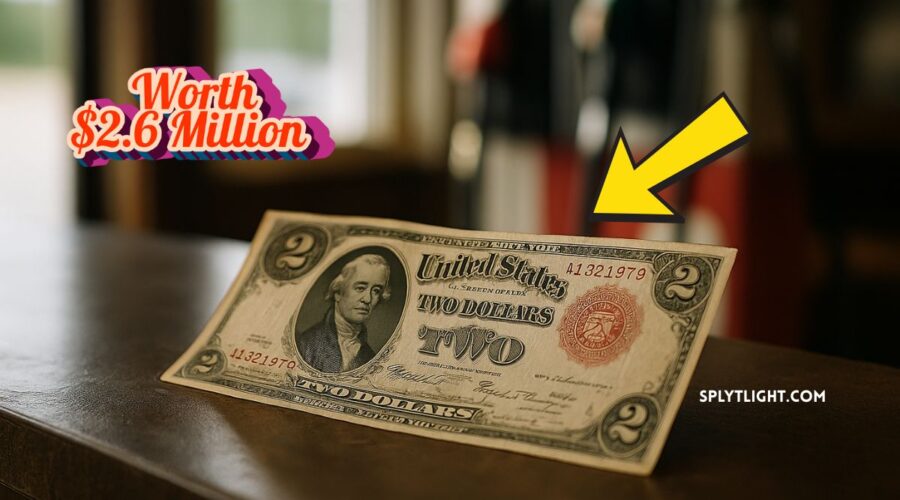This Rare $2 Bill Found At A Gas Station Is Worth $2.6 Million!
Imagine stopping at a gas station, paying in cash, and walking away with change that could change your life. That’s exactly what happened when one unsuspecting customer received a rare $2 bill—later identified as being worth a staggering $2.6 million. What seemed like ordinary currency turned out to be an extraordinary piece of collectible history.
The Unbelievable Discovery
During a routine transaction at a local gas station, a customer was handed a $2 bill as part of their change. Noticing the bill looked unusual—older, crisp, and with distinct design features—they decided to keep it instead of spending it.
After further inspection, the bill was identified as an exceptionally rare note from the 1890s, known to collectors as part of the “Grand Watermelon” series.
These types of bills are almost never found in general circulation, especially in near-perfect condition, making this discovery one of the most remarkable finds in recent memory.
What Makes This $2 Bill Worth $2.6 Million?
Several unique characteristics contribute to the massive value of this rare $2 bill:
- Issued in 1890: Currency from this period is highly collectible due to its age and historical significance.
- “Grand Watermelon” Design: The zeros on the reverse side resemble watermelons, giving this rare note its nickname.
- Uncirculated or Near-Mint Condition: A note over a century old in such condition is exceptionally rare.
- Distinct Serial Number: The serial number adds uniqueness and boosts value.
- Limited Remaining Specimens: Only a few exist in similar condition today.
Features of the $2.6 Million Bill
| Feature | Details |
|---|---|
| Year Issued | 1890 |
| Nickname | Grand Watermelon Note |
| Series | Treasury Note |
| Condition | Near-Mint |
| Estimated Value | $2,612,000 |
This bill, thanks to its unique combination of age, rarity, and preservation, is now considered one of the most valuable $2 bills ever found in public circulation.
Understanding the “Grand Watermelon” Series
The series received its nickname due to the large, rounded zeros on the reverse side, which resemble watermelons.
Originally issued in limited quantities, these bills were part of U.S. currency history during a time of economic transition. Collectors value them not just for rarity but for their artistic and historical significance.
Could You Have a Valuable $2 Bill?
While most $2 bills today are only worth face value, certain features can significantly increase a bill’s value:
- Red or Brown Seals instead of green
- Star Notes with a star in the serial number
- Low or Unique Serial Numbers (e.g., 00000001 or 12345678)
- Uncirculated Bills that have never been used
- Printing Errors or misalignments that increase rarity
Even modern $2 bills can be collectible if they meet one or more of these conditions.
This gas station discovery proves that rare treasures can appear in the most unexpected places. A simple $2 bill—easily overlooked—turned out to be worth over $2.6 million.
While such finds are rare, it’s worth paying close attention to the money that passes through your hands. You never know when an ordinary transaction could become a life-changing moment.
FAQs
Are all old $2 bills valuable?
Not necessarily. Most $2 bills, even from decades ago, are only worth their face value unless they possess specific rare characteristics or are in uncirculated condition.
How can I tell if my $2 bill is rare?
Look for unusual features like red or brown seals, serial number patterns, star symbols, or printing errors. Condition also plays a major role.
Where can I get my $2 bill appraised or sold?
Currency dealers, numismatic shows, or collectible auction platforms are excellent places to get an accurate appraisal and potentially sell rare notes.

Leave a Reply Cancel reply